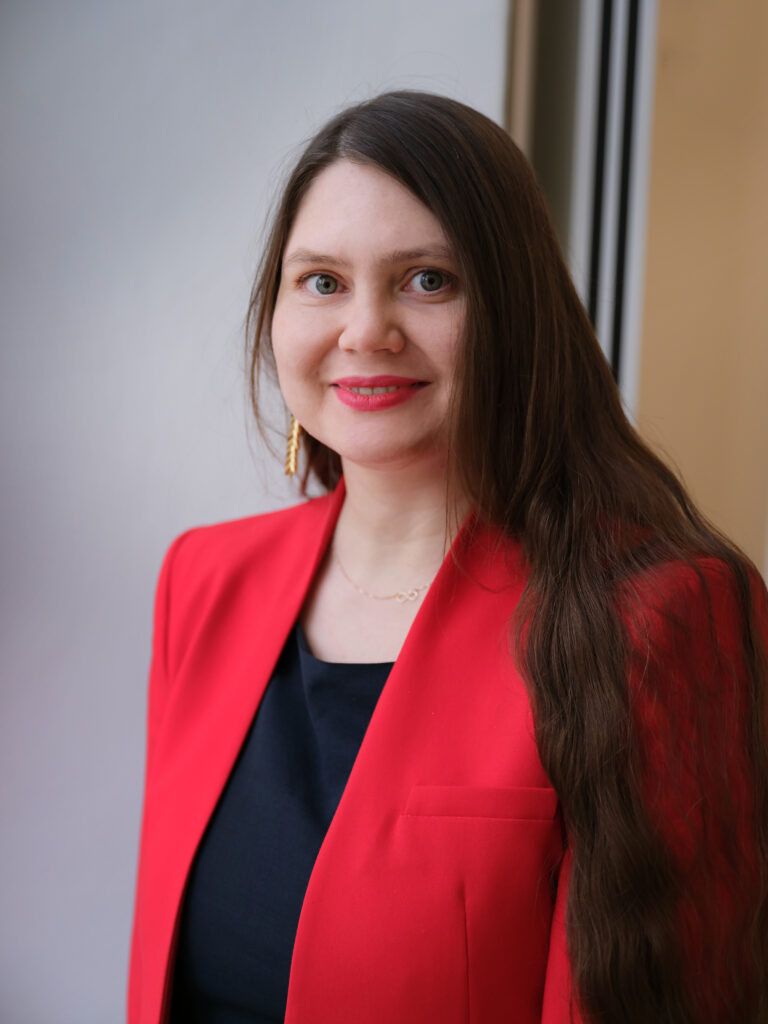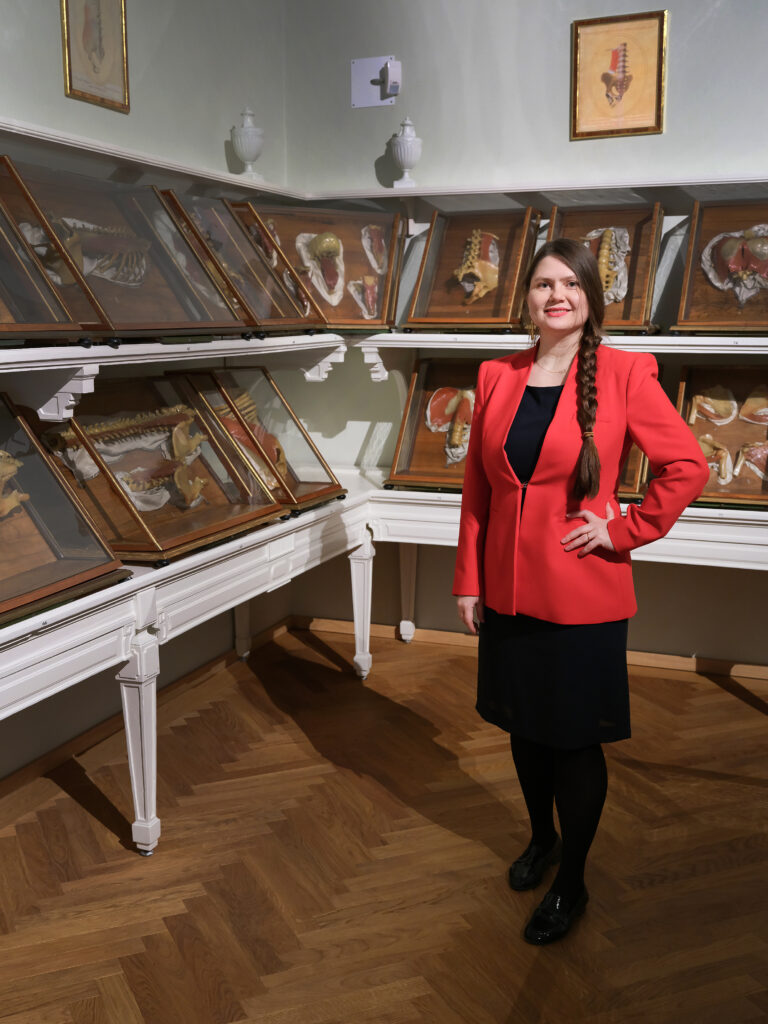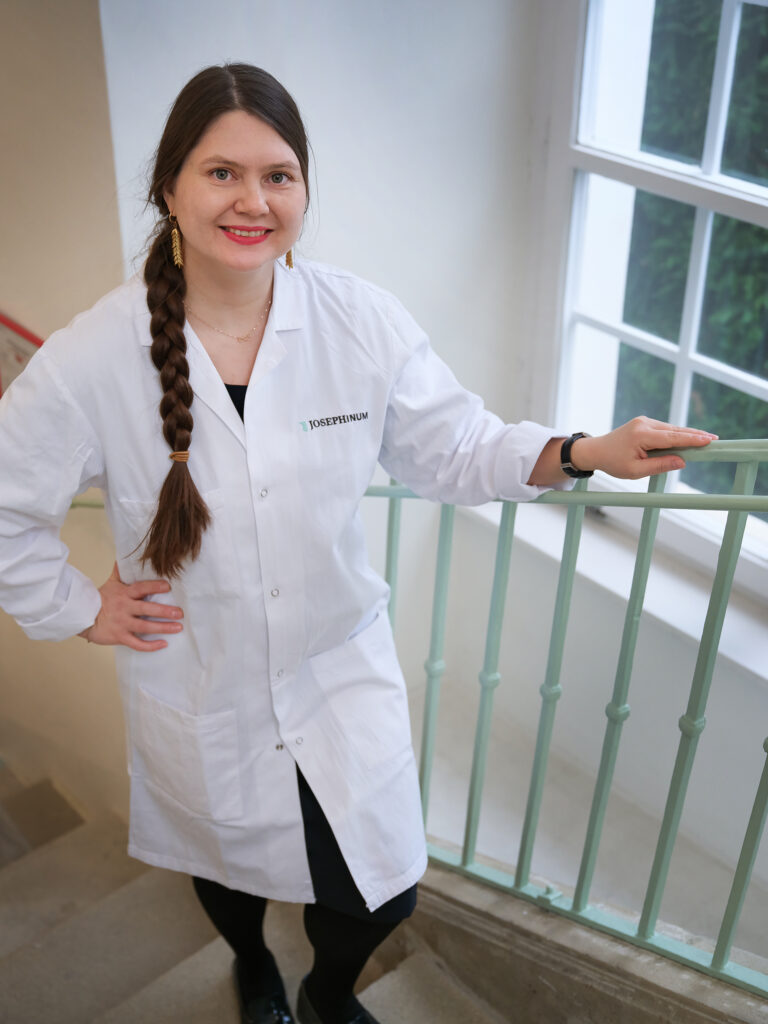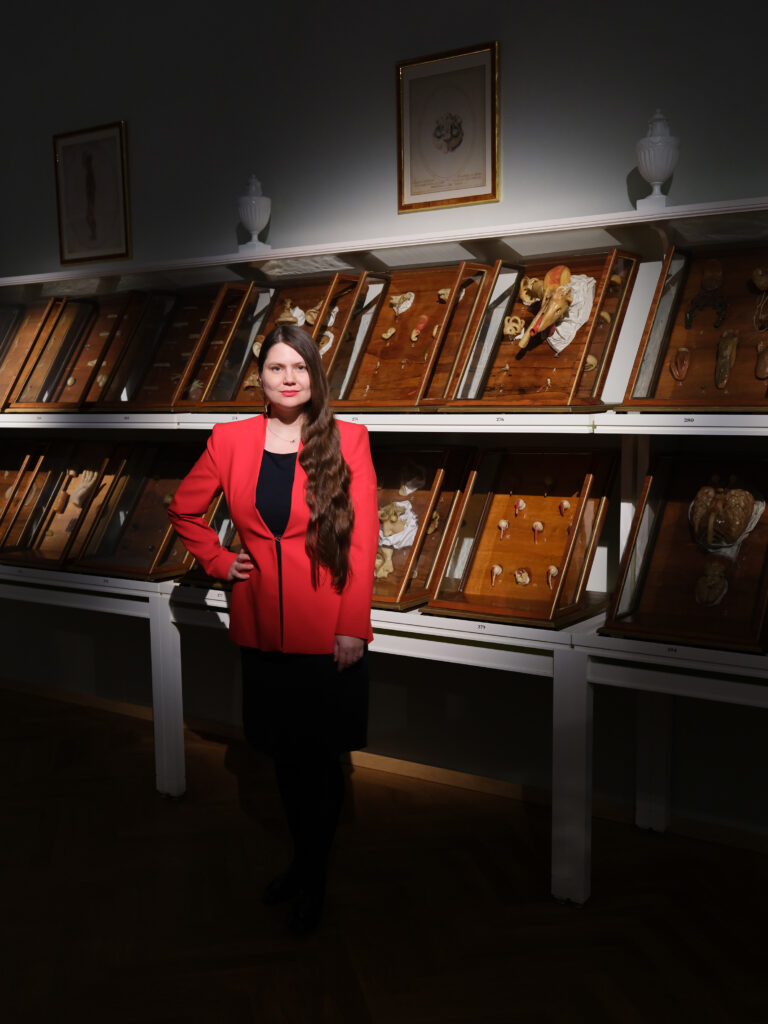
17 February 2025
Oksana Musiienko: “I consider myself integrated into the Austrian professional environment after completing the program”
Oksana Musiienko, Professional Integration HUB 2.0 Program Participant (Josephinum – Medical Collections)
Intro
- Age: 35 years old
- City in Ukraine where you lived before the full-scale invasion (forced relocation): Kyiv
- Specialization: historian
PROFESSIONAL BACKGROUND
I have been working at the Bohdan and Varvara Khanenko National Museum of Arts as a Senior Research Fellow since 2010.
The Khanenko Museum is currently operational, hosting temporary exhibitions, primarily featuring contemporary art, and participating in exhibition projects abroad with its collection.
FORCED EMIGRATION
The war found me in Kyiv, at home in my apartment. Austria was the first country we went to due to the full-scale invasion of russia into Ukraine because we had acquaintances there.
LIFE IN AUSTRIA
In Austria, my family and I faced several key challenges, including finding housing, adjusting to the different mentality of people, dealing with bureaucratic issues, not knowing the German language, and securing a kindergarten for my child.
However, I did try to work in my field. A friend from my German language courses informed me about a vacancy for a history teacher at a Saturday school, and I successfully got the position.
In my daily life during emigration, what supports me is my self-belief and the support of my family. If I could give advice to myself when I first started my journey in Austria, I would say, “Learn German and believe in yourself. You will succeed, definitely.” I would also tell myself, “Many opportunities for professional growth and self-realization await you.”

Professional Integration HUB
I found out about the Professional Integration HUB program from Yana Barinova’s Instagram page.
My key expectations from the internship were to gain an insider’s view of the museum professional environment, observe firsthand how everything works, apply my professional experience in the institution, enrich my experience for future opportunities, improve my German language skills, expand my vocabulary, and contribute as both a specialist and a citizen of Ukraine. These expectations did not change.
I would describe the Professional Integration HUB as a leap forward, as it provides an opportunity for a professional start in a new country.
From my experience in the Austrian professional environment, I have gained several key insights and practical cases that could be applied in museum management. One of the main ideas is creating interactive and dynamic exhibits that engage visitors on multiple levels, showcasing creativity and technology. For example, the Josephinum Museum offers thematic tours and specialized exhibitions, providing unique insights into specific areas of interest. Another important aspect is implementing personalized visitor experiences, such as individualized tours tailored to visitors’ interests, backgrounds, and preferences. The Josephinum Museum also hosts personalized guided tours, ensuring visitors can explore exhibits based on their curiosity and expertise.
Additionally, museums can serve as spaces of co-creation by involving visitors, artists, and curators in the creative process, which fosters collaboration and community engagement. In Austria, many museums host workshops, interactive installations, and collaborative projects where visitors contribute to artistic or historical installations. Sustainable development in museum management is also key, with an increasing focus on eco-friendly practices, such as using sustainable materials in construction and renovation. Many museums integrate sustainable design principles and energy-efficient technologies.

Another area of focus is digitalizing collections, providing online access to rare and historical artifacts through digital archives, which ensures broader visibility and educational outreach. Major museums have developed virtual galleries and interactive archives, allowing people worldwide to explore collections remotely. Ensuring museum accessibility for people with disabilities is also crucial. Museums in Europe often adhere to strict accessibility guidelines, ensuring that visitors with disabilities can interact seamlessly with exhibits.
Finally, museums can become vibrant social spaces by organizing events that cater to diverse social groups, such as schoolchildren, elderly people, and individuals with disabilities. Museums often host community events, school tours, and workshops to bring people from different social backgrounds together, fostering shared learning experiences.
These ideas and case studies can serve as inspiration for implementing similar museum practices in local contexts. Adapting them to the specific needs of the audience and cultural environment ensures that museums become more inclusive, accessible, and engaging spaces for everyone.
In my professional background, I have successfully implemented several skills in my host organization, including scientific historical research, the ability to prepare and conduct guided tours, and knowledge of various sculpture-making techniques. My understanding of history and methods of object preservation and storage has also been crucial, as well as my proficiency in working within a library environment. Furthermore, my team collaboration and communication skills have allowed me to contribute effectively to the organization. These unique experiences have proven invaluable in shaping my contributions to the host organization.

Based on my personal path, here are five key tips for Ukrainians in Austria to fulfill themselves in their professional field:
First, learn German; language skills are essential for effective integration and communication. Second, submit your diploma for recognition to ensure your qualifications meet local professional standards. Third, find your professional community by attending industry events, thematic exhibitions, and conferences to connect with peers and experts in your field. Fourth, develop self-presentation skills to show your openness to learning, adaptability, and readiness for professional growth. Finally, leverage your unique experience by using your background and expertise as a competitive advantage and an added value in a globalized world.
PLANS AFTER PARTICIPATING IN THE PROGRAM
Internship at the Professional Integration HUB, of course, influenced my professional ambitions. I realized that I have a high level of competence and professionalism.
The most valuable experience for Ukraine would be in the development of historical research, the museum sector, and cultural management. Adopting practices from the place where I interned, particularly the Josephinum, could be highly beneficial. Key practices to implement include ensuring accessibility for all, such as the presence of elevators, digitalizing collections, fostering openness to collaboration, and applying digital technologies in exhibitions.
I consider myself integrated into the Austrian professional environment after completing the program.
Photos: Valerie Loudon